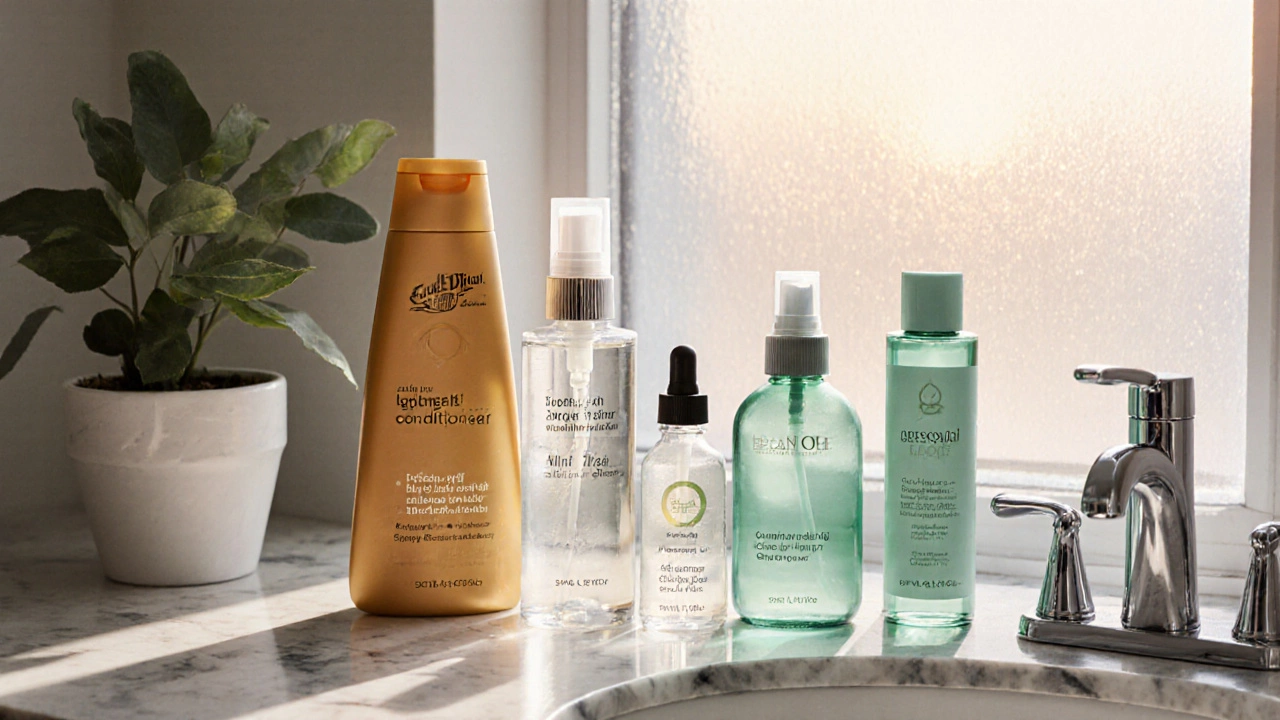Everyday Hair Routine: Simple Steps for Healthier Hair Every Day
When people talk about an everyday hair routine, a consistent set of simple, daily habits designed to maintain hair health and appearance. Also known as daily hair care, it’s not about fancy products or hours in front of the mirror—it’s about knowing what your hair actually needs, and doing it without stress. Most of us wash our hair every few days, but that’s just one piece. A real everyday hair routine includes how you handle wet hair, what you use to style it, how you sleep on it, and even how you brush it in the morning. It’s the small things that add up—like not rubbing your hair with a towel like a towel is your enemy, or skipping heat tools on days you don’t need them.
What you put on your hair matters, but so does what you don’t do. Overwashing strips natural oils, leading to dryness and breakage. Too much heat from blow-dryers or straighteners weakens strands over time. And if you’re sleeping on cotton pillowcases, you’re probably creating friction that leads to tangles and split ends. A better option? A silk or satin pillowcase. It’s not magic, but it’s one of the easiest upgrades you can make. Your hair doesn’t need ten steps. It needs consistency, gentleness, and protection. Think of your hair washing frequency, how often you cleanse your scalp and strands based on hair type and lifestyle. Also known as shampoo schedule, it’s a personal thing—some need it every other day, others once a week. The key is listening to your scalp, not following Instagram trends. If your scalp feels tight or flaky, you’re washing too much. If it’s greasy by noon, you might need to adjust your products or habits.
Then there’s the hair health, the overall condition of your hair, including strength, shine, elasticity, and resistance to breakage. Also known as hair condition, it’s not just about looks—it’s about function. Healthy hair grows steadily, sheds minimally, and bounces back when pulled gently. What affects it? Diet, stress, water quality, even how often you tie your hair up. A lack of protein or iron can make hair thin and brittle. Too much stress can trigger shedding. And if you’re always pulling your hair into tight ponytails, you’re risking traction alopecia—something no hair serum can fix. You don’t need expensive treatments to improve it. Just stop the damage. Let your hair air-dry when you can. Use a wide-tooth comb on wet hair. Avoid products with sulfates and silicones if your hair feels dull or weighed down. And if you’re coloring or chemically treating your hair, give it a break between sessions.
There’s no single right way to do this. Your routine should fit your life, your hair type, and your goals. Maybe you just want less frizz. Maybe you want more volume. Maybe you’re trying to grow it out. Whatever it is, the answer isn’t in the next viral product—it’s in the habits you repeat every day. Below, you’ll find real advice from people who’ve figured out what works for their hair, without the hype. No fluff. Just what helps—and what doesn’t.

